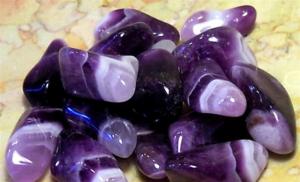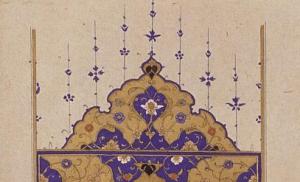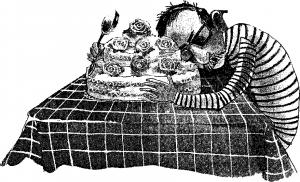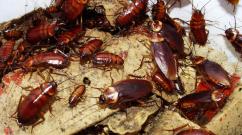Protective herbs. Magical plants of the Rosicrucian Order In the Middle Ages, Arnica was widely used in gynecological practice
The Rosicrucians believed that the aroma of a rose is refreshing, strengthening, never intoxicating, gives new strength, ideas, relieves overwork, fatigue, headaches, makes everything around revive, renew, and turn green. The listed qualities, as well as the fact that for the Rosicrucians the rose was a special flower, the main one associated with the name of the founder, give reason to attribute the flower to the sign of Aries.
A rose can be found in the flower horoscope of the Druids, in dream books, for example - a dream in which you see blooming and fragrant roses promises a joyful event and the fidelity of loved ones. It was believed that the rose absorbs the energy of laziness, gives creativity, resists aggressiveness, stops quarrels and fights, and helps women become more independent. But the rose itself has no pronounced magical properties. Her weapon is beauty. But at the same time, almost all rituals that call for love and preserve love are performed using rose oil or a living scarlet rose...
Roses are also used in medicine.
The main medicinal component of rose flowers is their essential oil. It has a stimulating and harmonizing effect on the immune system, nervous system, improves the functioning of the endocrine glands, eliminates dysbacteriosis, relieves spasms of cerebral vessels (in fact, it is a good remedy for the treatment of vegetative-vascular dystonia).
In ancient times in Salerno the rose was considered one of the best medicines; Thus, rose oil was used internally for stomach pain and constipation; externally included in various ointments and for cosmetic purposes; used in combination with vinegar for infected wounds; rose petals infused with wine - for diarrhea and female diseases; fresh rose petals - externally erysipelas; petals mixed with honey - for gum diseases, and petals mixed with honey water - as an antipyretic, etc.
Inhaling the aroma of rose oil or just a fresh rose relieves attacks of nausea and migraines.
A bath of rose petals is an excellent remedy for all nervous diseases. Tones, relieves fatigue and anxiety.
Herbalists have been the main healers of the people for many centuries. The knowledge of how and when to harvest herbs was passed on in the strictest secrecy from generation to generation.
When to collect medicinal and magical herbs
From spring to autumn, people prepare magical herbs. The collection occurs as the plants bloom, ripen, and acquire witchcraft powers. If leaves are needed, then they should be collected before flowering, before they give all their strength to the flowers. If there are roots, then either in the spring, when the sprouts are just hatching, or after flowering.
The most successful summer days for gathering are considered to be Trinity (the date of Trinity can be found out from the church calendar), Agrafena Kupalnitsa on July 6 and the holiday of Ivan Kupala on July 7. These days, plants reveal to man all the secrets of magic. But for this to happen, it is necessary to say during the collection:
“The mother of the earth is damp, the sun is clear, the winds are violent, the waters of heaven and earth! Bless the grass harvest! I will not cause harm, I will not desecrate the forest and field, but I will appreciate generosity. Amen".
Under the plant that is picked first, you need to put a “gift” - a coin, sugar, a beautiful ribbon, etc. But neither gifts nor spells will work if plants are collected within the city, near roads or landfills. The grasses in these places are “blind and deaf” magical power she either sleeps in them or is depressed. It is extremely difficult to awaken her.
When planning to collect herbs, it is wise to consult with lunar calendar. And it says: on the growing Moon, the life force of plants tends to rush upward - into the leaves, stems, flowers. As the witchcraft wanes, the roots are filled with power. The day of collection should be quiet and clear. The above-ground parts should be collected in the morning, after the dew has disappeared, the roots - only in dry weather. The collected raw materials should be dried in the shade, in well-ventilated places.
It is not necessary to collect all the witchcraft plants; it is important to be able to use them correctly and combine them to achieve your goal. In magic there are 12 such “basic” plants. Here they are:
- St. John's wort. Drives away black sorcerers and evil spirits, protects from the evil eye and damage.
- Mother of God grass (merlin, weeping grass). Protects from energy vampires, preserves beauty, consoles in grief.
- Ivan-da-Marya (maryannik, verdigris). Used in love rituals, gives wisdom.
- Elecampane. The sphere of its magical action is protection, love, intuition. Protects from illnesses, failures, gives vigor.
- Yarrow. Helps in marriage, in increasing wealth, in gaining clairvoyance and exorcism.
- Clover. Provides success in love and gives youth
- Nettle. In addition to strong protection against evil spirits, nettle has powerful healing properties.
- Thistle. A persecutor of evil spirits, the basis for a cooling potion.
- Ivan-tea (fireweed). Restores strength, attracts wealth, helps in work.
- Plantain. Brings good luck, makes the longest journey easy.
- Shepherd's purse. Helps you gain financial well-being.
- Mint. A universal herb that allows you to gain wealth, love, induce prophetic dreams, and improve relationships.
Important! At dawn on the day of Ivan Kupala, they collect fireweed, loosestrife, nettles, and mint. St. John's wort, yarrow, elecampane, clover, fireweed, shepherd's purse, and thistle are harvested during their active flowering phase.

Herbs are properly collected and dried - you can prepare potions. Whatever drug you take, you should follow general rules: use only spring, well, rain or melt water, do not allow extraneous and negative thoughts at the time of preparation.
Almost all medicines are made on the waxing Moon. The process begins with a general conspiracy:
“I formulate and pronounce witchcraft words, I ask for blessings from the earth and the sky - direct my thoughts, requests and warehouses to the right place. I trust your strength and wisdom. Amen".
Potion for beauty and youth
Take a small pinch of the Mother of God herb, clover and mint, mix, remember in your hands or in a mortar, pour into a cup (jar, ladle), pour 200 ml of hot water (not boiling water) and place in a water bath. Stir with a wooden spoon and say the spell:
“Heavenly powers, earthly powers! Do it this way: ugliness is behind the porch, but beauty is in the face, old age is gone, and youth is in color. Amen".
Simmer the potion for 20-30 minutes. and strain. Wipe your face and body with the resulting infusion early in the morning or before bed.

Take 1 part each of St. John's wort, yarrow, fireweed and 2 parts shepherd's purse. Grind in a mortar, pour into a bowl, add water and place on low heat. Stirring clockwise with a stick, repeat the spell:
“The grasses are getting lower, wealth is getting closer. Let gold and silver arrive in my house day by day, from morning to morning. Amen".
Once the potion boils, remove it from the heat. Without allowing it to cool, take a broom and, dipping it in the charmed potion, sprinkle everything in the house, paying special attention to the threshold.
Love potion
Mix elecampane root, mint and fireweed, crush, whisper:
“I, the servant of God (name), command that in the heat and on a stormy day, let the servant of God (name) flare up for me with passionate love. Let her heart be attached to me, and never look at others. So be it. Amen".
Pour the mixture with hot water, wrap it in a scarf and let it brew. Pour the potion into soup or tea (at least 1 tbsp, but better a little more) for your lover. If this is not possible, then spray it on the threshold and front door of the house where your loved one lives, and bury the grass next to his porch so that no one can see.
Magical plants of the Rosicrucian Order (Plants according to the sign of the Zodiac) The development of knowledge in any field has always been accompanied by dangers, secrets, intrigues.. And the best confirmation of this is the creation of Orders. It was in the Orders that knowledge that had accumulated over centuries was stored. Today we will talk about the magic of the Rosicrucian Order. There are several versions of the origin of this order. But we’re not having a history lesson, so we’ll stick to the generally accepted one. A certain young man, 16 years old, from a poor noble family, probably unaware of his magical abilities, makes a pilgrimage to the Holy Land, then travels to Turkey, through the countries of the Arabian Peninsula, where he becomes familiar with the sacred, secret wisdom. On his way to Morocco, he meets elder magicians who pass on their knowledge to him. The young man returns to Europe and tries to share his knowledge there. Muggle scientists ridicule him and his theories. But, already quite a powerful magician, he decides to found his own Order and pass on the secrets only to a select few. Secluded in his home, he writes a book and passes on his knowledge to his first students. The Brotherhood of the Rose Cross is created (the German surname Rosenkreutz means a rose cross, or rather a cross of roses). The signature on the documents looked like an R.C. seal. Their program included withdrawal from worldly affairs, wearing monastic clothes, free healing, and the secret of brotherhood for a hundred years. A manifesto was written that delighted many people. Creative people liked the skill of presentation of the material and beauty, scientists caught snippets in the text ancient wisdom, the noble goals of the Brotherhood attracted magicians, etc... The emblem of the order was a black cross - a symbol of the physical body, entwined with seven red roses - a symbol of plant-like, purified blood. An interesting fact is that the Brotherhood was visible for 108 years, then it went underground for 108 years and after 108 years it was again revived to active life. But this is still history :) And we are interested in the medicine of the Brotherhood. It was based on twelve magical plants (probably using the sexagesimal system adopted by ancient Egypt and Babylon). Various combinations of the following plants created a formula for success not only in the form of healing, but also in increasing life expectancy. The knowledge of astrology was used by the Rosicrucians in order to correlate these magical plants used in the healing and healing process with the characteristics of the signs of the Zodiac. According to their properties, each of these 12 plants correlates with one or another sign of the Zodiac, as well as with a specific planet of our system. You will find a description of the plants below. 12 magical plants: Arnica Blue Fighter Butterbur Valerian Verbena Heliotrope Gentian St. John's wort Mandrake Rose Dryweed Fuchsia Basic plants are described in my Library. Perhaps others will be added there later. But it is still worth mentioning each of these plants, at least a little. Arnica Arnica is a genus of perennial herbs in the Asteraceae family. The ancient Greek physician Dioscorides named the plant with yellow flowers that look like small sunflowers ptarmica, which means “sneezing” in Greek. Indeed, the flowers and leaves of this plant cause sneezing. Later, students of Dioscorides distorted the name ptarmika, and the plant became known as arnica. The Rosicrucians used the flowers of this plant. Arnica decoctions and tinctures have a peculiar smell and a sharp, bitter taste, which indicates the cold, airy, dry element of the plant (Aquarius). Infusions of flowers are used as a hemostatic agent in obstetric and gynecological practice. In the form of lotions or compresses for bruises, abrasions, hematomas, pustular diseases, minor burns and frostbite. In addition, arnica has a choleretic effect. Blue wrestler Blue wrestler (A. Napellus) - wrestler, blue buttercup, lumbago-grass - according to Greek mythology, this plant grew from the foam that fell from the mouth of Cerberus when Hercules (11th of the twelve labors) pulled him out of the underworld. The plant was credited with the properties of driving away evil spirits, remove stones and sand from the kidneys and liver. In the Middle Ages it was widely used in wedding ceremonies. It was placed under the threshold even before the newlyweds arrived at the groom's house. If the bride jumped over the threshold or the groom carried her over it in his arms, then all the slander and bad wishes for the bride came back and fell on the ill-wishers. The triumph of law and retribution. The blue wrestler is associated with the sign of Capricorn, this is evidenced by the legend about his appearance (underground kingdom, underworld). Butterbur Butterbur (Petasites), butterbur, is a genus of perennial herbs in the Asteraceae family. Often blooms before the leaves emerge. When young, the leaves usually have whitish pubescence, especially below (it is confused with a related plant that is very similar in appearance to it). The leaves have bad smell and bitter taste. Another name is Kamchug grass (Kamchug is an unripe abscess). The plant has diaphoretic, expectorant, anti-inflammatory, analgesic and wound-healing effects. An aqueous infusion of leaves and roots is taken orally for colds, coughs, hoarseness, suffocation, and hysterical attacks. Crushed fresh leaves are applied to wounds for healing, and to swollen areas of the body to reduce swelling. Poultices made from the leaves reduce rheumatic and gouty pain. Sign - Cancer. The plant is actively used in modern herbal medicine today. Valerian Valerian (Valeriana officinalis L), family Valeriaceae. Common names are mountain grass, cat grass, cat root. A perennial herbaceous rhizomatous plant with fibrous roots and an erect cylindrical stem. Dried roots have a characteristic strong odor, spicy, bittersweet taste. The Rosicrucians used valerian root, with preference given to especially large plants. Valerian was credited with hypnotic properties. It was believed that she could make a person walk on all fours, meow, howl, bite, and scratch. In scientific and folk medicine The rhizome of the plant is used together with the roots in the form of tinctures, infusions, decoctions, drops, tablets. Prescribe medications for insomnia, neuroses, cardiovascular diseases, hypertension, spasms of the stomach and intestines. Valerian improves appetite and has a general strengthening effect. It is part of teas and soothing teas. Undoubtedly, Valerian is a Gemini plant. VerbenaVerbena is a genus of plants in the verbena family. Annual and perennial herbs and shrubs. The ancients attributed miraculous qualities to Verbena. They assured that it helps eliminate lies and fictitious rumors, strengthens alliances, and reconciles warring parties. The Druids revered Verbena. In their opinion, she could heal any disease. It was believed that if the room in which one eats is sprinkled with Verbena, the feast will be very cheerful. A specially prepared drink from Verbena kindles love and enhances libido. The name Verbena comes from Veneris vena - vein of Venus. And as you know, love, sympathy, friendliness, partnership, mutual understanding, peaceful negotiations, attraction, beauty, hair, veins are under the sign of Libra, therefore Verbena is classified as a Libra plant. HeliotropeHeliotrope, (Heliotropium L.), a genus of plants from the borage family. Herbs or subshrubs with simple, alternate leaves and small white or purple flowers, collected mostly in curls or tassels. G. flowers contain fragrant essential oil. The connection with the Sun of this plant is reflected even in its name - Heliotropium (following the Sun). The flower is dedicated to Apollo. It was believed that Heliotrope protects from enemies, helps a person show his best qualities, advance, take an honorable position, and promotes states of revelation. All of the listed qualities and the name allow Heliotrope to be classified as Leo plants. GentianGentian (Gentiana), a genus of perennial, less often annual, herbs and subshrubs of the Gentian family. Grows in mountain meadows. It is a typical representative of the group of “bitter” plants. Even after dilution of 1:20,000, its bitter taste remains pronounced. But this did not stop the plant from being used in medicine. G. was used as good remedy fight against infectious diseases, for the treatment of difficult-to-heal wounds, gallbladder diseases, various inflammations, and also as an antipyretic and tonic. The plant is also included in the so-called Druid Flower Horoscope. It was believed that a person born under this sign has some mystery, mostly external, while everything is explained quite simply. For example, the reason for secrecy and isolation may be ordinary shyness. A person born under this sign persistently achieves his goal. Scorpio plant. St. John's wortSt. John's wort. Amazing plant, revered by many European peoples. In the old days in foreign literature St. John's wort was called the "herb of St. John" because... the beginning of its flowering coincided with Midsummer's Day. Bolotov wrote in 1780: “Not all herbs and plants have that advantage and such kindness to themselves that they could be used daily and be a universal medicine. This can be said about St. John’s wort.” In Rus', it is associated with the belief that the grass protects against spells and temptations. In Germany, it was believed that a person was not afraid of any witchcraft, any damage, if he carried St. John's wort. A branch of St. John's wort, hung on the door or hidden under the threshold, will not allow a person with bad intentions to enter the house. The Normans knew that St. John's wort, collected in the forest and hung in a barn, would protect livestock from death, and cows would produce even more milk. In Southern Germany and Bohemia, St. John's wort was sewn into sashes and placed in boots to protect against injuries to the lower back and limbs (Sagittarius control zone). The decoction was used to wash the feet from fatigue as a result of long walking. The Rosicrucians used St. John's wort as a means of igniting fire in the body, a means of accelerating blood, protecting, protecting from evil spirits. Well, for those who prefer to stand firmly on the ground, it is worth remembering that St. John's wort is useful for many ailments, primarily as an astringent and anti-inflammatory agent in dentistry, as well as for healing wounds and burns. St. John's wort is under the sign of Sagittarius. Mandragora Mandragora is a genus of plants from the nightshade family. Poisonous plant of the nightshade family. It was used by many famous magicians of the past. Hippocrates used it to combat melancholy and suicidal mania. Flavius tried to drive out demons by fumigating patients with Mandrake. Homer filmed epileptic seizures in pairs of Mandrake. The mandrake root resembles the image of a man. In the Middle Ages, magicians dreamed of growing a perfect creature in the laboratory and breathing life into it. Mandrake was used in different forms: they drank infusions and decoctions, rubbed ointment into the skin, inhaled dried and ground into powder, used for fumigation, made amulets and talismans worn on the body. Magicians were interested in this plant for its magical properties, and ordinary people considered it a powerful remedy against the power of evil and arousing lust and desire. The Rosicrucians knew all this, as well as the fact that Mandrake is a strong narcotic substance that can soothe pain and put a person into a state of sleep. Its psychotropic qualities, the halo of legends, myths, and dreams around Mandrake indicate a nature close to the sign of Pisces. RosaRosa, (Rosa), a genus of plants from the Rosaceae family. A shrub with smooth or spiny branches, odd-pinnate (5-7) leaves and regular large flowers. The rose has been a symbol for many orders. The golden rose is the emblem of the Pope, signifying a special papal blessing. The rose is the emblem of many Catholic saints. The mystical “rose without thorns” is a symbol of the Virgin Mary... For the Rosicrucians, the rose was a flower of dedication, symbolizing love, patience, martyrdom, purity of idea, and was associated with Christ. The Rosicrucians believed that the aroma of a rose is refreshing, strengthening, never intoxicating, gives new strength, ideas, relieves overwork, fatigue, headaches, makes everything around revive, renew, and turn green. The listed qualities, as well as the fact that for the Rosicrucians the rose was a special flower, the main one associated with the name of the founder, give reason to attribute the flower to the sign of Aries. The rose can be found in the flower horoscope of the Druids and in dream books. For example, a dream in which you see blooming and fragrant roses promises a joyful event and fidelity to your loved ones. It was believed that the rose absorbs the energy of laziness, gives creativity, resists aggressiveness, stops quarrels and fights, and helps women become more independent. But the rose itself does not have pronounced magical properties. Her weapon is beauty. But at the same time, almost all rituals that call for love and preserve love are carried out using rose oil or a living scarlet rose... Roses are also used in medicine. The main medicinal component of rose flowers is their essential oil. It has a stimulating and harmonizing effect on the immune system, nervous system, improves the functioning of the endocrine glands, eliminates dysbacteriosis, relieves cerebral vascular spasms (in fact, it is a good remedy for the treatment of vegetative-vascular dystonia). In ancient times in Salerno, rose was considered one of the best medicines. Thus, rose oil was used internally for stomach pain and constipation; externally included in various ointments and for cosmetic purposes; used in combination with vinegar for infected wounds; rose petals infused with wine - for diarrhea and female diseases; fresh rose petals - externally for erysipelas; petals mixed with honey - for gum diseases, and petals mixed with honey water - as an antipyretic, etc. Inhaling the aroma of rose oil or just a fresh rose relieves attacks of nausea and migraines. A bath of rose petals is an excellent remedy for all nervous diseases. Tones, relieves fatigue and anxiety. Sushenitsa Sushenitsa, a representative of the aster family, or Compositae (Asteraceae, or Compositae). This is a low, from 10 to 30 cm, plant with elongated, linear-lanceolate leaves, with a prostrate branched stem of a grayish color. Its flowers are small, yellowish-brown, its fruits have a fluffy fluffy tuft, and it blooms in late summer - autumn. This plant was used by the Rosicrucians to relieve stomach pain. Sushenitsa heals wounds and ulcers well, including gastrointestinal tract, is able to bind and remove toxins and poisons from it. In folk medicine, it is used for angina pectoris, pulmonary tuberculosis, diabetes, nervous excitability, palpitations, hypertension, and diseases of the stomach and intestines in the form of a decoction, extract and ointment. In magic it can only be used to enhance the effect of the main components. Sushenitsa belongs to the sign of Virgo. Fuchsia Fuchsia is a genus of plants in the fireweed family. Shrubs or small trees with opposite or whorled, rarely alternate leaves. The flowers are hanging on long stalks, solitary or in racemose inflorescences. The flowers are delicate, purple tones, two-tiered. The fruits (berries) are edible. The Rosicrucians endowed Fuchsia with the qualities of the goddess of love: softness, tenderness, warmth, beauty, grace. Today Fuchsia is not used as medicinal plant. Its main purpose is to decorate flower beds, lawns, and gardens. Fuchsia is a Taurus plant. Time passes, everything changes, but almost all of these herbs are used in modern or folk medicine even now. Knowledge of the past helps us today.
Today we will talk about the magic of the Rosicrucian Order.
There are several versions of the origin of this order. But we’re not having a history lesson, so we’ll stick to the generally accepted one. A certain young man of 16 years old, from a poor noble family, probably unaware of his magical abilities, makes a pilgrimage to the Holy Land, then travels to Turkey, through the countries of the Arabian Peninsula, where he becomes familiar with sacred, secret wisdom. On his way to Morocco, he meets elder magicians who pass on their knowledge to him.
The young man returns to Europe and tries to share his knowledge there. Muggle scientists ridicule him and his theories. But, already quite a powerful magician, he decides to found his own Order and pass on the secrets only to a select few.
Secluded in his home, he writes a book and passes on his knowledge to his first students. The Brotherhood of the Rose Cross is created (the German surname Rosenkreutz means a rose cross, or rather a cross of roses). The signature on the documents looked like an R.C. seal. Their program included withdrawal from worldly affairs, wearing monastic clothes, free healing, and the secret of brotherhood for a hundred years. A manifesto was written that delighted many people.
Creative people liked the skill of presenting the material and beauty, scientists caught it in  in the text, scraps of ancient wisdom, the noble goals of the Brotherhood attracted magicians, etc... The emblem of the order was a black cross - a symbol of the physical body, entwined with seven red roses - a symbol of plant-like, purified blood.
in the text, scraps of ancient wisdom, the noble goals of the Brotherhood attracted magicians, etc... The emblem of the order was a black cross - a symbol of the physical body, entwined with seven red roses - a symbol of plant-like, purified blood.
An interesting fact is that the Brotherhood was visible for 108 years, then it went underground for 108 years and after 108 years it was again revived to active life.
But this is still history :) And we are interested in the medicine of the Brotherhood. It was based on twelve magical plants (probably using the sexagesimal system adopted by ancient Egypt and Babylon).
Various combinations of the following plants created a formula for success not only in the form of healing, but also in increasing life expectancy.
The knowledge of astrology was used by the Rosicrucians in order to correlate these magical plants used in the healing and healing process with the characteristics of the signs of the Zodiac. According to their properties, each of these 12 plants correlates with one or another sign of the Zodiac, as well as with a specific planet of our system.
12 magical plants:
Arnica.
 A perennial herbaceous plant that grows wild in the mountains. The Rosicrucians used arnica flowers. Arnica decoctions and tinctures have a peculiar smell and a sharp, bitter taste, which indicates the cold, airy, dry element of the plant (Aquarius).
A perennial herbaceous plant that grows wild in the mountains. The Rosicrucians used arnica flowers. Arnica decoctions and tinctures have a peculiar smell and a sharp, bitter taste, which indicates the cold, airy, dry element of the plant (Aquarius).
Since ancient times, the contracting and hemostatic effect on the uterus has been known.
In the Middle Ages, Arnica was widely used in gynecological practice. In addition, it has a choleretic effect.
Aquarius is responsible for hormonal levels, for the gallbladder, in addition, the very nature of the plant and its growth zone indicate the connection of Arnica with this zodiac sign, ruled by Uranus.
Blue fighter or Aconite..
According to Greek mythology, this plant grew from the foam that fell from the mouth of Cerberus when Hercules  (11th of the twelve labors) pulled him out of the underworld. Poisonous. Other names: Tsar-grass, Cover-grass. Drives away demons, evil spirits, removes stones and sand from the kidneys and liver.
(11th of the twelve labors) pulled him out of the underworld. Poisonous. Other names: Tsar-grass, Cover-grass. Drives away demons, evil spirits, removes stones and sand from the kidneys and liver.
In the Middle Ages, it was widely used in wedding ceremonies; it was placed under the threshold even before the newlyweds arrived at the groom’s house.
If the bride jumped over the threshold or the groom carried her over it in his arms, then all the slander and bad wishes for the bride came back and fell on the ill-wishers. The triumph of law and retribution.
The blue wrestler is associated with the sign of Capricorn and Saturn, this is evidenced by the legend of its appearance (underground kingdom, the underworld), evidenced by its medicinal properties (removal of sand, stones), and wedding ceremonies.
Butterbur or mother and stepmother..
 Another name is Kamchug grass (Kamchug is an unripe abscess). Widely used since ancient times for various chest diseases as an expectorant and anti-inflammatory agent; means that suck out pus.
Another name is Kamchug grass (Kamchug is an unripe abscess). Widely used since ancient times for various chest diseases as an expectorant and anti-inflammatory agent; means that suck out pus.
Probably, any child knows about the symbolism of the two sides of the leaf of this plant: the tender, soft, warm part is associated with the mother, and the hard, cold, slippery part is associated with the stepmother.
The legend (the image of the mother) and the main use in medicine (chest, lungs) indicate the sign - Cancer.
Valerian.
The Rosicrucians used valerian root, with preference given to especially large plants.
Valerian was credited with hypnotic properties; it was believed that it could make a person walk on all fours, meow, howl, bite, and scratch. But mainly Valerian is used for various types of nervous disorders, cough, and bronchial asthma. Undoubtedly, Valerian is a Gemini plant.
Verbena.
The ancients attributed miraculous qualities to Verbena; they assured that it helps eliminate  lies and fictitious rumors, consolidation of alliances, reconciliation of warring parties.
lies and fictitious rumors, consolidation of alliances, reconciliation of warring parties.
Ambassadors going to negotiate with the enemy always took Verbena with them. The Druids revered Verbena; in their opinion, it could heal any disease.
It was believed that if the room in which one eats is sprinkled with Verbena, the feast will be very cheerful. A specially prepared drink from Verbena kindles love and enhances libido. Ancient and medieval beauties used it as a hair care cosmetic.
The name Verbena comes from Veneris vena - vein of Venus. And as you know: love, sympathy, friendliness, partnership, mutual understanding, peaceful negotiations, attraction, beauty, hair, veins are under the sign of Libra (ruler Venus), therefore Verbena is classified as a Libra plant.
Heliotrope.
 The connection with the Sun of this plant is reflected even in its name - Heliotropium (following the Sun). The flower is dedicated to Apollo.
The connection with the Sun of this plant is reflected even in its name - Heliotropium (following the Sun). The flower is dedicated to Apollo.
It was believed that Heliotrope protects from enemies, helps a person show his best qualities, advance, take an honorable position, and promotes states of revelation.
All of the listed qualities and the name allow Heliotrope to be classified as a plant of Leo (ruler Sun) Gentian. A remedy known since ancient times, it is a typical representative of the group of “bitter” plants.
It has a pronounced bitter taste even at a dilution of 1:20,000, but this did not prevent it from being used as a good means of combating infectious diseases, for the treatment of difficult-to-heal wounds, gallbladder diseases, various inflammations, and also as an antipyretic and tonic. The Scorpio plant (ruler Mars) has these properties.
St. John's wort.
A plant revered by many European peoples. They preferred to collect it on the night of Ivan  Bathed.
Bathed.
In Germany, it was believed that a person was not afraid of any witchcraft, any damage, if he carried St. John's wort.
A branch of St. John's wort, hung on the door or hidden under the threshold, will not allow a person with bad intentions to enter the house. The Normans knew that St. John's wort, collected in the forest and hanged in a barn, would protect livestock from death, and cows would produce even more milk.
In Southern Germany and Bohemia, St. John's wort was sewn into sashes and placed in boots to protect against injuries to the lower back and limbs (Sagittarius control zone). The decoction was used to wash the feet from fatigue as a result of long walking.
The Rosicrucians used St. John's wort as a means of igniting fire in the body, a means of accelerating blood, protecting, protecting from evil spirits. St. John's wort is under the sign of Sagittarius (ruler Jupiter). And the name confirms this.
Mandrake.
 The plant is poisonous, from the nightshade family, a relative of Belladonna. Unfavorable and dangerous even from the point of view of the Rosicrucians. Hippocrates used it to combat melancholy and suicidal mania.
The plant is poisonous, from the nightshade family, a relative of Belladonna. Unfavorable and dangerous even from the point of view of the Rosicrucians. Hippocrates used it to combat melancholy and suicidal mania.
Flavius tried to drive out demons by fumigating patients with Mandrake. Homer filmed epileptic seizures in pairs of Mandrake.
Magicians are interested in this plant for its magical properties, and ordinary people considered it a powerful remedy against the power of evil and arousing lust and desire. The Rosicrucians knew all this, as well as the fact that Mandrake is a strong narcotic substance that can soothe pain and put a person into a state of sleep.
Its psychotropic qualities, the halo of legends, myths, and dreams around Mandrake indicate a nature close to the sign of Pisces (ruler Neptune).
Rose
For the Rosicrucians, the rose was a flower of dedication, symbolizing love, patience,  martyrdom, the purity of the idea, was associated with Christ. Within the framework of this work, we cannot describe in detail the legends about the symbolism of the Grail associated with the mysticism of blood.
martyrdom, the purity of the idea, was associated with Christ. Within the framework of this work, we cannot describe in detail the legends about the symbolism of the Grail associated with the mysticism of blood.
We will only point out that Joseph of Arimathea, when washing the body of Christ, collected His Blood into a cup, which again began to ooze from Him. This Blood has received all the influences of Christ incarnate in the human body, and is now free and pure.
Usually dark red blood is a symbol of the lower, animal passions in man. The blood, purified from all sin, took on a vegetable character and became “the color of a rose.” It became a symbol of the cleansing power of Christ.
The Rosicrucians believed that the aroma of a rose is refreshing, strengthening, never intoxicating, gives new strength, ideas, relieves overwork, fatigue, headaches, makes everything around revive, renew, and turn green.
The listed qualities, as well as the fact that for the Rosicrucians the rose was a special flower, the main one associated with the name of the founder, I think that it can be safely attributed to the sign of Aries (ruler Pluto).
Cottonweed.
 An annual plant with a prostrate-branched low stem of a grayish color, flowers of a brownish-yellow color, fruits with a fluffy tuft - a fly, blooms in late summer - autumn.
An annual plant with a prostrate-branched low stem of a grayish color, flowers of a brownish-yellow color, fruits with a fluffy tuft - a fly, blooms in late summer - autumn.
The Rosicrucians used it as a plant that acts on the gastrointestinal tract to relieve abdominal pain; after use, the patient’s condition improved, he gained weight, and became calm.
Sushenitsa heals wounds and ulcers well, including those of the gastrointestinal tract, and is able to bind and remove toxins and poisons from it. Sushenitsa belongs to the sign of Virgo (ruler Mercury).
Fuchsia.
In the wild it grows in the forests of South America and Asia. 
Prefers fertile, soft, moist soil. It occurs in the form of individual low-growing plants or bushes. The leaves are succulent, bright green, round, and regular in shape. Fuchsia flowers are beautiful, delicate, two-tiered, soft pink, purple tones on a long stalk.
The fruits (berries) are edible. The Rosicrucians endowed Fuchsia with the qualities of Venus: softness, tenderness, warmth, beauty, grace.
Today, Fuchsia is not used as a medicinal plant; its main purpose is to decorate flower beds, lawns, and gardens. Fuchsia is a Taurus plant (ruler Venus).
 Training “Damage, evil eye, curse. Deliverance and protection"
Training “Damage, evil eye, curse. Deliverance and protection"
Evil eye, damage, curses - these words only recently entered our vocabulary, and today announcements about the removal of damage or the removal of the crown of celibacy are perceived as commonplace and do not cause surprise.
There is a lot of unclear, mysterious, and even far-fetched surrounding the concepts of “evil eye” and “damage”. These words are sure to be associated with an evil eye, a sorcerer or witch, or a village grandmother.
In fact, the evil eye and damage akin to wounds or damage to our energetic body, as a result of which not only the mental state, but also health can suffer. Distinguish household evil eye, obtained as a result of a surge of emotions of ordinary people, and received from “experts”. They differ in strength and duration of impact.
Please note that there are not many real specialists in the world who can cause serious damage to human health using magical methods. However, there are so-called “risk groups” most susceptible to energy effects:
Pregnant women and infants.
People with low immunity have little rest, drink and smoke, and work hard.
Rude and foul-mouthed.
With energy disturbance.
Scary? May be. But there is another law of the Universe that can protect you. Namely, the one that states that every person is completely responsible for his own life and no one else can deprive him of his freedom of choice. That is You have the power to ensure that not a single person on earth can cause you energetic harm.
-
Rosa Rose, (Rosa), is a genus of plants from the Rosaceae family. A shrub with smooth or spiny branches, odd-pinnate (5-7) leaves and regular large flowers. The rose has been a symbol for many orders. The golden rose is the emblem of the Pope, signifying a special papal blessing. The rose is the emblem of many Catholic saints. The mystical “rose without thorns” is a symbol of the Virgin Mary... For the Rosicrucians, the rose was a flower of dedication, symbolizing love, patience, martyrdom, purity of idea, and was associated with Christ.
The Rosicrucians believed that the aroma of a rose is refreshing, strengthening, never intoxicating, gives new strength, ideas, relieves overwork, fatigue, headaches, makes everything around revive, renew, and turn green. The listed qualities, as well as the fact that for the Rosicrucians the rose was a special flower, the main one associated with the name of the founder, give reason to attribute the flower to the sign of Aries.
The rose can be found in the flower horoscope of the Druids and in dream books. For example, a dream in which you see blooming and fragrant roses promises a joyful event and fidelity to your loved ones. It was believed that the rose absorbs the energy of laziness, gives creativity, resists aggressiveness, stops quarrels and fights, and helps women become more independent. But the rose itself does not have pronounced magical properties. Her weapon is beauty. But at the same time, almost all rituals that call for love and preserve love are performed using rose oil or a living scarlet rose...
Roses are also used in medicine.
The main medicinal component of rose flowers is their essential oil. It has a stimulating and harmonizing effect on the immune system, nervous system, improves the functioning of the endocrine glands, eliminates dysbacteriosis, relieves cerebral vascular spasms (in fact, it is a good remedy for the treatment of vegetative-vascular dystonia).
In ancient times in Salerno, rose was considered one of the best medicines. Thus, rose oil was used internally for stomach pain and constipation; externally included in various ointments and for cosmetic purposes; used in combination with vinegar for infected wounds; rose petals infused with wine - for diarrhea and female diseases; fresh rose petals - externally for erysipelas; petals mixed with honey - for gum diseases, and petals mixed with honey water - as an antipyretic, etc.
Inhaling the aroma of rose oil or just a fresh rose relieves attacks of nausea and migraines.
A bath of rose petals is an excellent remedy for all nervous diseases. Tones, relieves fatigue and anxiety.














